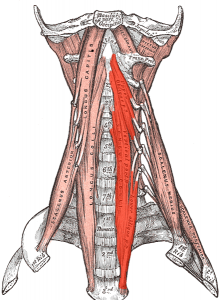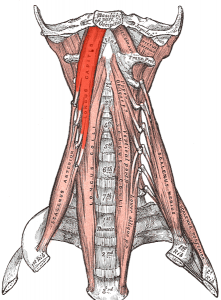The deep neck flexor muscles of today’s post are:
Longus Capitus- which connects to the spine through four tendinous slips off of the transverse processes of the third through sixth cervical vertebrae. It moves up to insert into the occipital bone.
Longus Colli- a muscle in three parts connecting to the spine between the atlas (C1) and the third thoracic vertebra (T3).
These deep neck flexor muscles are designed to support the head and stabilize the neck. Weakness in the deep neck flexors can wreak havoc with our upper spine leading to forward head posture, chronic neck pain and headaches.
Ideally these muscles stabilize the neck freeing surrounding muscles to do their work. When things don’t go as planned other muscles—sternocleidomastoid, upper trapezius, levator scapula, platysma— have to jump in and provide stability to the neck and head.
Poor sitting and standing posture, mostly due to a misaligned pelvis, often lead to weakness in these muscles resulting in forward head posture and the pain and dysfunction that accompany this all too common problem.
It doesn’t matter whether you are sitting or standing as you read this but without moving—feel the position of your head. It will invariably be forward of the chest. So many aspects of our modern world facilitate the misalignment of the cervical spine and the deep neck flexor muscles.
While there are exercises one can do to change the tone and strength of the deep neck flexors, changing our walking, sitting and standing posture is the only real way to effect lasting change in these muscles.


